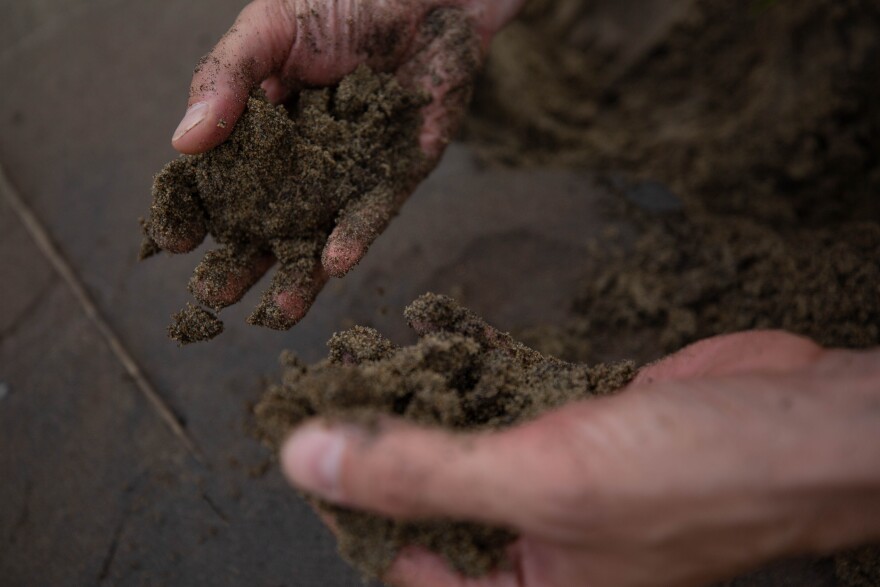The Puritan tiger beetle used to be found up and down the Connecticut River, but climate change, dam construction, flooding, and other ecosystem changes have reduced its range to a few small patches of sandy soil.
For researchers, where those patches are is a well-guarded secret. That's because last fall, they planted hundreds of beetle larvae on a few of those beaches, with the hopes of finding adults this year.
Rodger Gwiazdowski gently runs his hands through sand. Puritan tiger beetles burrow in sandy beach habitat found along the banks of the Connecticut River.

Gwiazdowski is the lead scientist for today's tiger beetle survey. Over the last several years, he developed an expertise in these rare insects, formulating a technique to raise them in captivity and re-introduce them to the wild.
Last year, he seeded more than 300 lab-reared Puritan tiger beetle larvae along several secret spots on the banks of the Connecticut River.
Today, his team is surveying to see if those larvae grew up to become mature adults.

As the river has become more developed, Puritan tiger beetle populations documented in the 19th and 20th centuries vanished. In Connecticut, the species is listed as "endangered" and tiger beetles are categorized as "threatened" federally.
"It's gone extinct from most of the river," Gwiazdowski said. "It hasn't mattered in a way that we've noticed. On the other hand, most of life on Earth we don't know very much about. The idea that because we don't know about something means it's not important, I think, is a powerfully naive concept."
Along the banks of the Connecticut River, Laura Saucier and Chris Davis search for evidence of Puritan tiger beetles.

Puritan tiger beetles are often confused with the much more common Bronzed tiger beetle. But Puritan tiger beetles differentiate themselves by connected white markings along their outer wings and a reflective glow that pops against the sand in the bright summer sun.
A glint of light reflects in the sand, catching the searchers' eyes. It's possible evidence of a Puritan tiger beetle.
Slowly, Chris Davis moves in and pounces with a net.

Davis and Neil Kapitulik examine the captured beetle.
It's an adult female Puritan tiger beetle. Gwiazdowski said it's likely an insect that was seeded last year as a larvae, pupated in the spring, and emerged as an adult.

After quickly describing the Puritan tiger beetle to NEXT host John Dankosky, Rodger Gwiazdowski releases the found insect. "This is a definite measure of success," he said.

Back at the boat, the team celebrates the find.
"This is — as far as we know — the first re-introduced Tiger beetle, which has successfully pupated on site," Gwiazdowski said.
"Behind that beetle is a team of at least 30 people ... who have all been helping this project for the last few years to get these beetles on the beach."






